Physical torturer of characters, emotional torturer of readers
Last active 60 minutes ago
Don't wanna be here? Send us removal request.
Text
If I ask nicely will people reblog this and tell me what their most common breakfast is? Not your favorite necessarily, just what you have for breakfast most frequently? 🙏🏽
#everything bagel toasted with cream cheese#recently its been apples tho bc we're out :/#reblog game
48K notes
·
View notes
Text
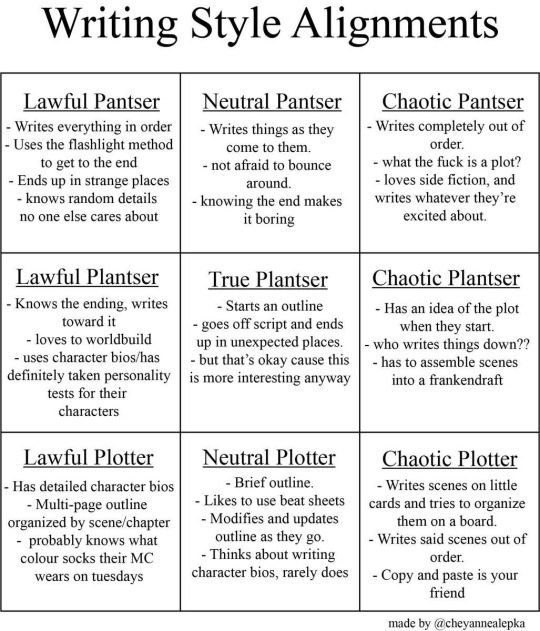
#somewhere between lawful and true planster#with a hint of chaotic panster in there too on occasion#writeblr
3K notes
·
View notes
Text
I'm planning to stick solely to Hugh's POV for The Assassin and the Dragonlance, but the funniest thing to me is the comparison of Hugh's impression of the Companions to the Companions' impression of him. It's basically like:
Hugh: They don't trust me at all, and I do not blame them. I would rather not be here at all but I cannot trust anyone else, and I don't trust these people either. But they seem more honorable than anyone else I've met so far. Except perhaps the wizard. He may attempt to dissect me when I am not looking.
Tanis, Sturm, and Flint: He kills people for money. I don't trust him.
Goldmoon and Riverwind: I don't trust any of these people, but what choice do we have?
Tas: *already yoinked his coinpurse*
Caramon: Assassin work is little different from mercenary work. I don't see what Raistlin wants with him but I never do so....
Raistlin: I am going to find out what his magic aura is even if I have to tear him apart.
#the assassin and the dragonlance#dragonlance#death gate cycle#hugh the hand#tanis half elven#sturm brightblade#flint fireforge#goldmoon#riverwind#tasselhoff burrfoot#caramon majere#raistlin majere#fanfiction#fanfic#writing thoughts
0 notes
Text
wholesome representation will kill the patient. she needs to torture fictional characters to live
15K notes
·
View notes
Text

4K notes
·
View notes
Text
WIP Wednesday 1/29/2025
Dragonlance/Death Gate: 9 sentences requested by @eriquin @somefishycat @auburnlaughter
The kender led the way out, as he had the way in. The rest of the group moved quickly, descending the tree, but Tanis hung back. Hugh hesitated at the edge of the platform, noticing him still standing in the middle of the now-desolated living room, staring at the goblin corpses. He shook his head and climbed down to the ground. He doubted Tanis wanted company, and by his reaction to the deaths of the goblins, no matter how much he also seemed to detest them, Hugh didn’t think Tanis would want his company, either. The group only had to wait a few moments before Tanis rejoined them. Wind gusted around them as he glanced behind, noting the far-off lights of search parties. Hugh drew his jacket tighter around himself. One of his first purchases made in this unfamiliar world, with the wages from the first job with Terris’ adventuring group.
The Hunter, the Myth and the Cure: 15 sentences requested by @twyrewolf @dreamed-for-not @stonemaskedtaliesin @tamsinswriting @oriharaizayadividesintoslytherin
Time down here had even less meaning than time in the locked room. At least in the small room she had windows to track the passage of the sun, even when she couldn’t see it through the trees. Here, though, she had no windows, no natural light to judge the hours by. Instead she had the continuous activity of the doctors, though they did come and go in shifts. Sagon oversaw much of the work of the doctors, and when he wasn’t present, the unmasked woman supervised in his place. She estimated eight total researchers, all wearing the same black doctors’ coats. Three worked under Sagon, and three worked under the woman. All but Sagon and her wore the same masks of black metal as the guards. Why did they wear those masks? Was it solely for the benefit of her and her father? Then why not have Sagon and the woman wear masks, too? As far as she could tell, the masks did little to hinder the research. They appeared to simply be metal ovals, slightly concave, but none who wore them seemed to have any difficulty seeing through them. Eye holes covered in a dark glass, perhaps? She’d heard of a type of glass that from one side was perfectly clear but the other appeared to be a mirror.
Supervillain x Civilian: 12 sentences requested by @balthazarusrex @catboy-jupiter @aparticularbandit @whimsicalmeerkat
Cleo: His name is Dorian Shields. He's a paramedic recently assigned here. Lives only a few blocks from that cafe. Has almost no social media presence, just an insta that he hasn't posted on in over three years. Morgan: Anything hinting that he's told anyone? Cleo: Not that I can tell. If he's figured it out, he's keeping the info off the web. Morgan: Thank you. Cleo: Naturally ;) Cleo: Also the client wants to meet on Sunday afternoon Morgan: 👍 I also suspected that, with my luck, I was bound to run into him again at some point whether I wanted to or not, and it would be less awkward to meet as Morgan than as Frenzy, regardless of how much he actually knew. He showed up at around eleven, a little earlier than last week, and this time he saw me as soon as he came in, waving as he went over to the counter to order. I waved back, paying closer attention to his emotions this time. Contentment, a bit of excitement, an underlying current of worry. But that could be unrelated.
#wip wednesday game#wip wednesday#writeblr#my writing#writing snippet#writing snippets#the hunter the myth and the cure#the assassin and the dragonlance#supervillain x civilian#fantasy writing#original writing#fanfiction
8 notes
·
View notes
Text
I'm just going to work on WIP Wednesday or my BTHB card and not think about all the shit going on in my life rn
#my random thoughts#my fucking brain#writing thoughts#is this the ao3 curse#has it finally caught up to me
4 notes
·
View notes
Text
Hey guess what happened again
You ever realize at 10:48 p.m. that you were supposed to do something at 3:30 p.m. but then completely forgor? Bc I did and now the emotional brain is being mean to me :/
#its a phone call but i wonder if i can just. send an email and achieve the same thing#hhhhhhhhhhhhhhhh#my random thoughts#adhd#anxiety#my fucking brain
8 notes
·
View notes
Note
You’ve definitely been in my prayers and prayer requests these past few days ❤️
Thank you so much <3
5 notes
·
View notes
Text
I feel like the trolly problem is only for people who don’t believe in objective morality.
You’re not morally at fault for an event you did not start. Ability to act does not mean you have the obligation to act. Doing nothing is always the right answer in this scenario.
#same with the violinist metaphor#you are not obligated to provide extraordinary care#morality#ethics#philosophy
17 notes
·
View notes
Text
Whumpuary Day 31
31. say something nice about your own work
I like my ocs :3
especially their dynamics and how whumpable they all are hehe
7 notes
·
View notes
Text
Two-dimensional prisons
- I’ve had the idea of somehow putting a whumpee in a computer for a really long time. confined to a single digital room, only able to interact with a few things, going from human to being bound by programming. The touch starvation that comes with that. Interacting with a cursor is nothing like interacting with another person. basically yeah tamagotchify them.
- Phones with the same concept^
- keeping whumpee trapped in a mirror, only ever able to gaze out at the real world.
- if you’re feeling really mean, make it a compact mirror. There’s hardly even enough space to shift around. A whole world just out of their reach from that claustrophobic little space they’re stuck in. They’re completely portable.
- Doesn’t have to be 2D, but a book or a journal. Being able to script whatever events they want for whumpee. Whether they’re aware of it all or not is also a fun thing to keep in mind.
- A painting overlooking a grand room. They’re allowed to move around in the frame. Being marveled at and spectated, or instructed to stay in a certain pose. That frame can always get smaller if they disobey.
- i know i already said mirrors, but basically any reflective surfaces work well. maybe a jewel or a puddle.
#the mirror thing is cool#and the painting too!#the book thing happens in tma kinda#fantasy whump#whump community#whump#whumpblr#whump prompt#whump prompts#captivity#unconventional restraints#magical whump#magical whumper#display whump
89 notes
·
View notes
Text
Hi all! I've been kind of absent here since most of the writing I've done lately is fanfiction. However, I've been working on some of my own stories lately and I'd like to start posting one or two of them! I'd like to see which ones you all might be interested in. Feel free to send me asks for more information or a snippet for any of these too! Summaries are below the poll.
Here are some summaries:
In the Shadow of the Tower: This is a close to being finished story that is told from the perspective of a husband and wife who learn they can talk to each other telepathically. They start off as a normal American couple but then Andy is kidnapped and disappears off the face of the Earth, quite literally. A desperate father finds Kiera and tells her that Andy has been taken to a different realm as a prisoner, as has his son. He thinks that they are being held together and hopes that by teaching Kiera to speak telepathically with Andy, they can figure out a way to rescue the both of them. Meanwhile, Andy finds himself in a dungeon cell being tortured, which he learns is a way to unlock certain powers that some people have. This one features several side love stories, some torture, and fun powers and fight scenes.
Brinnande's Story: Brinn is a seventeen year old pyrokinetic (controls fire) caught up in a battle between two factions, one who wants to bring a tyrannical rule to the world and the other that is trying to stop it. In her world, pyrokinesis is a secret that only those who have it know about it. She was found and began training with the group trying to stop the tyrants when she was in early middle school and has developed a fair amount of skill. However, her world is turned upside-down when her best friend (and secret crush) Matthew is mistaken for her and kidnapped by the tyrants. She has to find a way to rescue him without support from her group who deems the mission too risky. This one has some dungeon whump and a lot of healing after.
The Mer Story: Kai, the sixteen year old adopted son of two marine researchers, moves to an island in the middle of the ocean. There he becomes friends with two other teens (Mano and Keala) and they learn that they are all half mer and can shift between the two forms. Unfortunately, an unethical research group learns about them and to save his friends and all their families, Kai decides to sacrifice himself as a research specimen. This one has some fun lab whump and if it isn't chosen now, I will definitely be posting in May!
Jessie's Story: Jessie stumbles on a mafia hotspot and is kidnapped to keep her silent. They decide to keep her alive as a bargaining chip. She is eventually rescued by a band of previous victims of the mafia group and is adopted into their company. Her biggest goal after that is to figure out a way to safely reunite with her family, since she knows that they will be closely watched in case she tries to make contact. This story is set in a country where the government is extremely unstable and corrupt and the cities and towns are largely run by various criminal outfits. Some of the main features of this story are being tortured in a basement, found family, and seeking healing and peace.
The Servant King: This is my least developed story that I'm putting here. It's about a prince whose parents were killed in a coup when he was still a child. The head cook saved him by disguising him as one of her servants and raised him in the castle. As he grows older, he begins to take after his father, the slaughtered king. The usurping king decides that the boy will have to be killed because of his resemblance and so the cook tells him he has to run. He does and takes with him one of the maids, with whom he has fallen in love. Together they flee for the far off land of his uncle, where he hopes to find safety and potentially support to retake his kingdom.
#all of these are super interesting!#i voted shadow of the tower but i wouldn't mind any one that wins#other writers#polls#writeblr polls#writeblr
16 notes
·
View notes
Note
If you could train in any weapon, what would it be?
Ohhh sword for sure!
(I say this, having taken fencing for funsies in high school and therefore already trained in the blade)
But one can never study the blade too much :3
If I had to pick another weapon, I would choose spear, so I could wield the wooden spear my family gave me for Christmas last year. I still need to paint it, but that's a project for next week.
4 notes
·
View notes
Text
The funeral is later today. Thank you for your prayers.
5 notes
·
View notes
Text
Fantasy Guide to Interiors
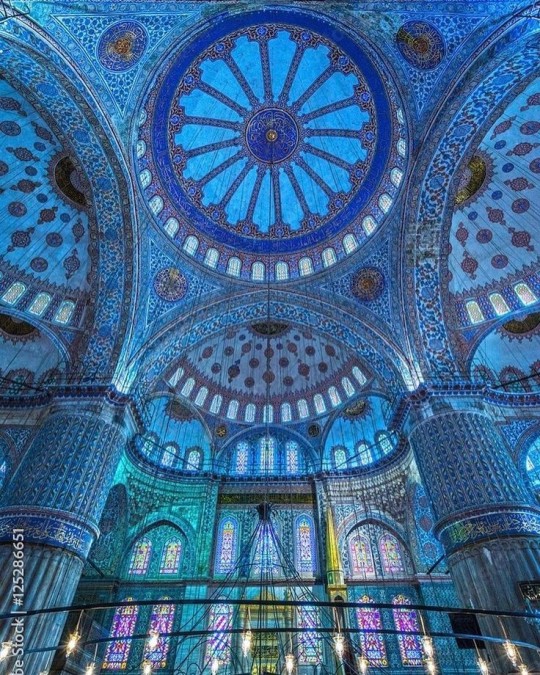
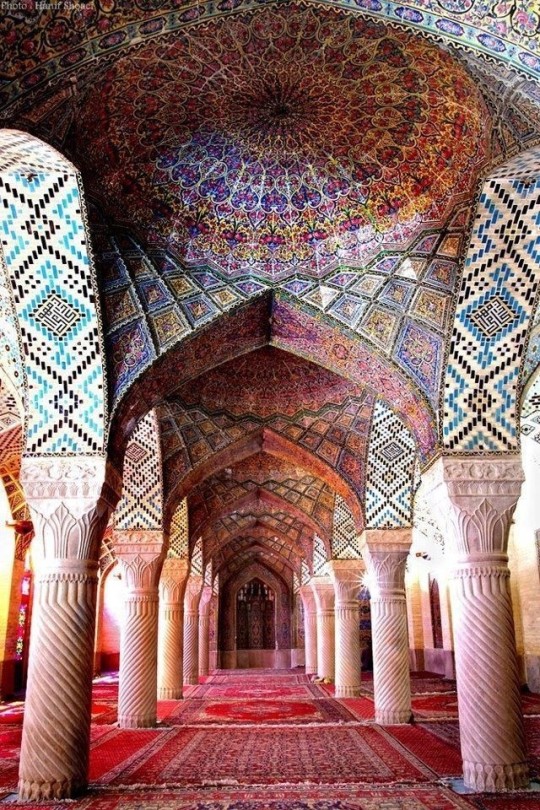
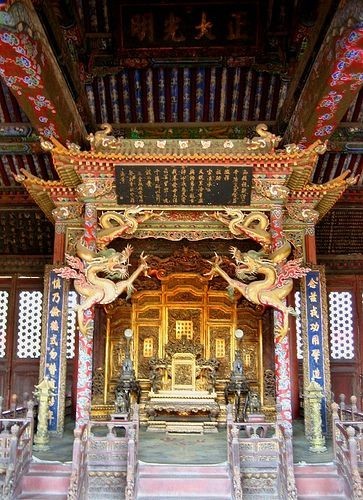
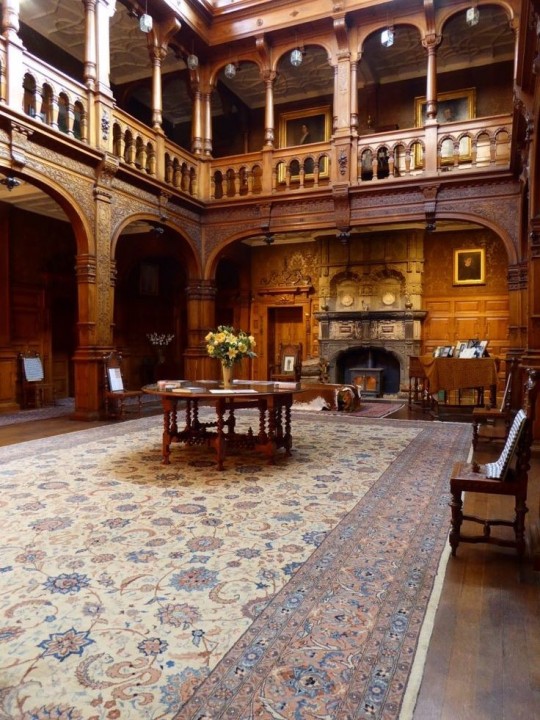
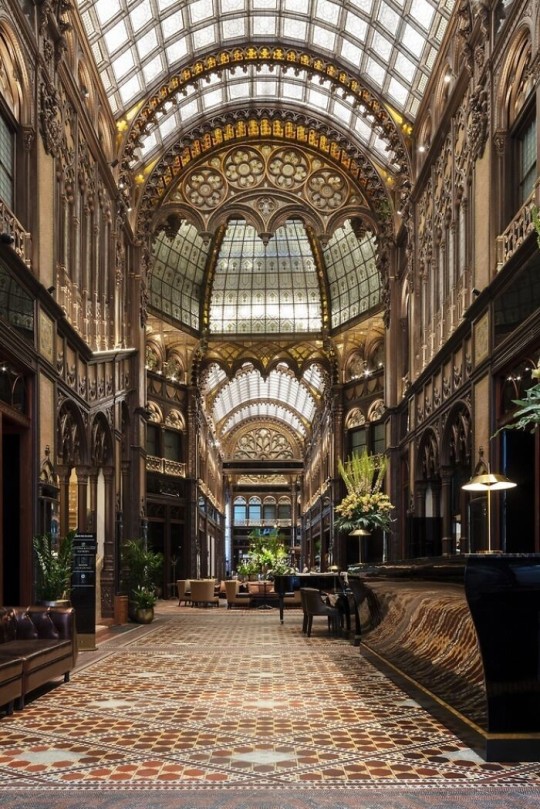
As a followup to the very popular post on architecture, I decided to add onto it by exploring the interior of each movement and the different design techniques and tastes of each era. This post at be helpful for historical fiction, fantasy or just a long read when you're bored.
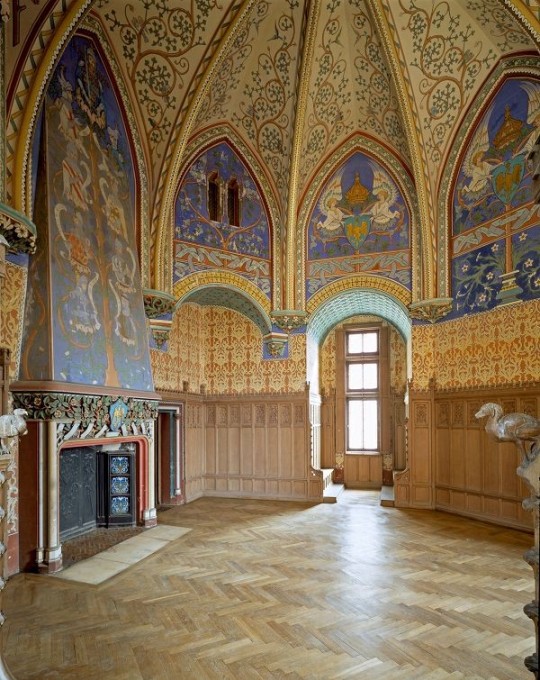
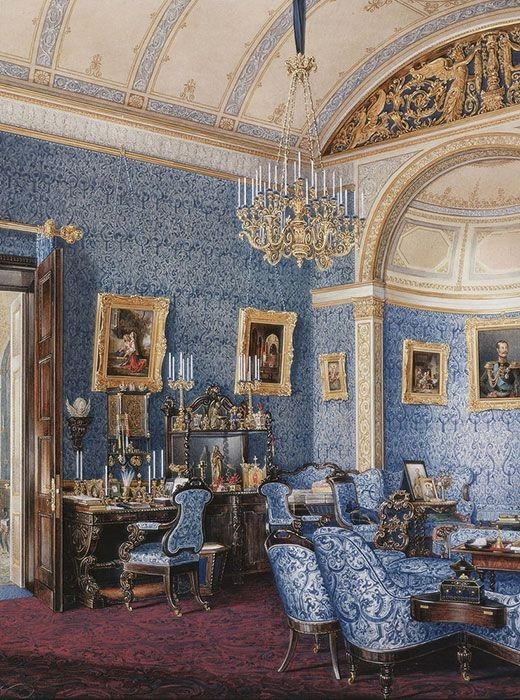
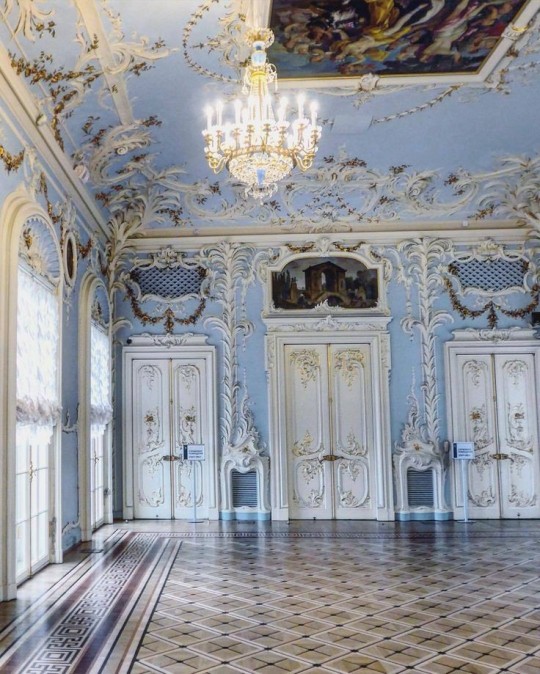
Interior Design Terms
Reeding and fluting: Fluting is a technique that consists a continuous pattern of concave grooves in a flat surface across a surface. Reeding is it's opposite.
Embossing: stamping, carving or moulding a symbol to make it stand out on a surface.
Paneling: Panels of carved wood or fabric a fixed to a wall in a continuous pattern.
Gilding: the use of gold to highlight features.
Glazed Tile: Ceramic or porcelain tiles coated with liquid coloured glass or enamel.
Column: A column is a pillar of stone or wood built to support a ceiling. We will see more of columns later on.
Bay Window: The Bay Window is a window projecting outward from a building.
Frescos: A design element of painting images upon wet plaster.
Mosaic: Mosaics are a design element that involves using pieces of coloured glass and fitted them together upon the floor or wall to form images.
Mouldings: ornate strips of carved wood along the top of a wall.
Wainscoting: paneling along the lower portion of a wall.
Chinoiserie: A European take on East Asian art. Usually seen in wallpaper.
Clerestory: A series of eye-level windows.
Sconces: A light fixture supported on a wall.
Niche: A sunken area within a wall.
Monochromatic: Focusing on a single colour within a scheme.
Ceiling rose: A moulding fashioned on the ceiling in the shape of a rose usually supporting a light fixture.
Baluster: the vertical bars of a railing.
Façade: front portion of a building
Lintel: Top of a door or window.
Portico: a covered structure over a door supported by columns
Eaves: the part of the roof overhanging from the building
Skirting: border around lower length of a wall
Ancient Greece
Houses were made of either sun-dried clay bricks or stone which were painted when they dried. Ground floors were decorated with coloured stones and tiles called Mosaics. Upper level floors were made from wood. Homes were furnished with tapestries and furniture, and in grand homes statues and grand altars would be found. Furniture was very skillfully crafted in Ancient Greece, much attention was paid to the carving and decoration of such things. Of course, Ancient Greece is ancient so I won't be going through all the movements but I will talk a little about columns.
Doric: Doric is the oldest of the orders and some argue it is the simplest. The columns of this style are set close together, without bases and carved with concave curves called flutes. The capitals (the top of the column) are plain often built with a curve at the base called an echinus and are topped by a square at the apex called an abacus. The entablature is marked by frieze of vertical channels/triglyphs. In between the channels would be detail of carved marble. The Parthenon in Athens is your best example of Doric architecture.
Ionic: The Ionic style was used for smaller buildings and the interiors. The columns had twin volutes, scroll-like designs on its capital. Between these scrolls, there was a carved curve known as an egg and in this style the entablature is much narrower and the frieze is thick with carvings. The example of Ionic Architecture is the Temple to Athena Nike at the Athens Acropolis.
Corinthian: The Corinthian style has some similarities with the Ionic order, the bases, entablature and columns almost the same but the capital is more ornate its base, column, and entablature, but its capital is far more ornate, commonly carved with depictions of acanthus leaves. The style was more slender than the others on this list, used less for bearing weight but more for decoration. Corinthian style can be found along the top levels of the Colosseum in Rome.
Tuscan: The Tuscan order shares much with the Doric order, but the columns are un-fluted and smooth. The entablature is far simpler, formed without triglyphs or guttae. The columns are capped with round capitals.
Composite: This style is mixed. It features the volutes of the Ionic order and the capitals of the Corinthian order. The volutes are larger in these columns and often more ornate. The column's capital is rather plain. for the capital, with no consistent differences to that above or below the capital.
Ancient Rome
Rome is well known for its outward architectural styles. However the Romans did know how to add that rizz to the interior. Ceilings were either vaulted or made from exploded beams that could be painted. The Romans were big into design. Moasics were a common interior sight, the use of little pieces of coloured glass or stone to create a larger image. Frescoes were used to add colour to the home, depicting mythical figures and beasts and also different textures such as stonework or brick. The Romans loved their furniture. Dining tables were low and the Romans ate on couches. Weaving was a popular pastime so there would be tapestries and wall hangings in the house. Rich households could even afford to import fine rugs from across the Empire. Glass was also a feature in Roman interior but windows were usually not paned as large panes were hard to make. Doors were usually treated with panels that were carved or in lain with bronze.
Ancient Egypt
Egypt was one of the first great civilisations, known for its immense and grand structures. Wealthy Egyptians had grand homes. The walls were painted or plastered usually with bright colours and hues. The Egyptians are cool because they mapped out their buildings in such a way to adhere to astrological movements meaning on special days if the calendar the temple or monuments were in the right place always. The columns of Egyptian where thicker, more bulbous and often had capitals shaped like bundles of papyrus reeds. Woven mats and tapestries were popular decor. Motifs from the river such as palms, papyrus and reeds were popular symbols used.
Ancient Africa
African Architecture is a very mixed bag and more structurally different and impressive than Hollywood would have you believe. Far beyond the common depictions of primitive buildings, the African nations were among the giants of their time in architecture, no style quite the same as the last but just as breathtaking.
Rwandan Architecture: The Rwandans commonly built of hardened clay with thatched roofs of dried grass or reeds. Mats of woven reeds carpeted the floors of royal abodes. These residences folded about a large public area known as a karubanda and were often so large that they became almost like a maze, connecting different chambers/huts of all kinds of uses be they residential or for other purposes.
Ashanti Architecture: The Ashanti style can be found in present day Ghana. The style incorporates walls of plaster formed of mud and designed with bright paint and buildings with a courtyard at the heart, not unlike another examples on this post. The Ashanti also formed their buildings of the favourite method of wattle and daub.
Nubian Architecture: Nubia, in modern day Ethiopia, was home to the Nubians who were one of the world's most impressive architects at the beginning of the architecture world and probably would be more talked about if it weren't for the Egyptians building monuments only up the road. The Nubians were famous for building the speos, tall tower-like spires carved of stone. The Nubians used a variety of materials and skills to build, for example wattle and daub and mudbrick. The Kingdom of Kush, the people who took over the Nubian Empire was a fan of Egyptian works even if they didn't like them very much. The Kushites began building pyramid-like structures such at the sight of Gebel Barkal
Japanese Interiors
Japenese interior design rests upon 7 principles. Kanso (簡素)- Simplicity, Fukinsei (不均整)- Asymmetry, Shizen (自然)- Natural, Shibumi (渋味) – Simple beauty, Yugen (幽玄)- subtle grace, Datsuzoku (脱俗) – freedom from habitual behaviour, Seijaku (静寂)- tranquillity.
Common features of Japanese Interior Design:
Shoji walls: these are the screens you think of when you think of the traditional Japanese homes. They are made of wooden frames, rice paper and used to partition
Tatami: Tatami mats are used within Japanese households to blanket the floors. They were made of rice straw and rush straw, laid down to cushion the floor.
Genkan: The Genkan was a sunken space between the front door and the rest of the house. This area is meant to separate the home from the outside and is where shoes are discarded before entering.
Japanese furniture: often lowest, close to the ground. These include tables and chairs but often tanked are replaced by zabuton, large cushions. Furniture is usually carved of wood in a minimalist design.
Nature: As both the Shinto and Buddhist beliefs are great influences upon architecture, there is a strong presence of nature with the architecture. Wood is used for this reason and natural light is prevalent with in the home. The orientation is meant to reflect the best view of the world.
Islamic World Interior
The Islamic world has one of the most beautiful and impressive interior design styles across the world. Colour and detail are absolute staples in the movement. Windows are usually not paned with glass but covered in ornate lattices known as jali. The jali give ventilation, light and privacy to the home. Islamic Interiors are ornate and colourful, using coloured ceramic tiles. The upper parts of walls and ceilings are usually flat decorated with arabesques (foliate ornamentation), while the lower wall areas were usually tiled. Features such as honeycombed ceilings, horseshoe arches, stalactite-fringed arches and stalactite vaults (Muqarnas) are prevalent among many famous Islamic buildings such as the Alhambra and the Blue Mosque.
Byzantine (330/395–1453 A. D)
The Byzantine Empire or Eastern Roman Empire was where eat met west, leading to a melting pot of different interior designs based on early Christian styles and Persian influences. Mosaics are probably what you think of when you think of the Byzantine Empire. Ivory was also a popular feature in the Interiors, with carved ivory or the use of it in inlay. The use of gold as a decorative feature usually by way of repoussé (decorating metals by hammering in the design from the backside of the metal). Fabrics from Persia, heavily embroidered and intricately woven along with silks from afar a field as China, would also be used to upholster furniture or be used as wall hangings. The Byzantines favoured natural light, usually from the use of copolas.
Indian Interiors
India is of course, the font of all intricate designs. India's history is sectioned into many eras but we will focus on a few to give you an idea of prevalent techniques and tastes.
The Gupta Empire (320 – 650 CE): The Gupta era was a time of stone carving. As impressive as the outside of these buildings are, the Interiors are just as amazing. Gupta era buildings featured many details such as ogee (circular or horseshoe arch), gavaksha/chandrashala (the motif centred these arches), ashlar masonry (built of squared stone blocks) with ceilings of plain, flat slabs of stone.
Delhi Sultanate (1206–1526): Another period of beautifully carved stone. The Delhi sultanate had influence from the Islamic world, with heavy uses of mosaics, brackets, intricate mouldings, columns and and hypostyle halls.
Mughal Empire (1526–1857): Stonework was also important on the Mughal Empire. Intricately carved stonework was seen in the pillars, low relief panels depicting nature images and jalis (marble screens). Stonework was also decorated in a stye known as pietra dura/parchin kari with inscriptions and geometric designs using colored stones to create images. Tilework was also popular during this period. Moasic tiles were cut and fitted together to create larger patters while cuerda seca tiles were coloured tiles outlined with black.
Chinese Interiors
Common features of Chinese Interiors
Use of Colours: Colour in Chinese Interior is usually vibrant and bold. Red and Black are are traditional colours, meant to bring luck, happiness, power, knowledge and stability to the household.
Latticework: Lattices are a staple in Chinese interiors most often seen on shutters, screens, doors of cabinets snf even traditional beds.
Lacquer: Multiple coats of lacquer are applied to furniture or cabinets (now walls) and then carved. The skill is called Diaoqi (雕漆).
Decorative Screens: Screens are used to partition off part of a room. They are usually of carved wood, pained with very intricate murals.
Shrines: Spaces were reserved on the home to honour ancestors, usually consisting of an altar where offerings could be made.
Of course, Chinese Interiors are not all the same through the different eras. While some details and techniques were interchangeable through different dynasties, usually a dynasty had a notable style or deviation. These aren't all the dynasties of course but a few interesting examples.
Song Dynasty (960–1279): The Song Dynasty is known for its stonework. Sculpture was an important part of Song Dynasty interior. It was in this period than brick and stone work became the most used material. The Song Dynasty was also known for its very intricate attention to detail, paintings, and used tiles.
Ming Dynasty(1368–1644): Ceilings were adorned with cloisons usually featuring yellow reed work. The floors would be of flagstones usually of deep tones, mostly black. The Ming Dynasty favoured richly coloured silk hangings, tapestries and furnishings. Furniture was usually carved of darker woods, arrayed in a certain way to bring peace to the dwelling.
Han Dynasty (206 BC-220 AD): Interior walls were plastered and painted to show important figures and scenes. Lacquer, though it was discovered earlier, came into greater prominence with better skill in this era.
Tang Dynasty (618–907) : The colour palette is restrained, reserved. But the Tang dynasty is not without it's beauty. Earthenware reached it's peak in this era, many homes would display fine examples as well. The Tang dynasty is famous for its upturned eaves, the ceilings supported by timber columns mounted with metal or stone bases. Glazed tiles were popular in this era, either a fixed to the roof or decorating a screen wall.
Romanesque (6th -11th century/12th)
Romanesque Architecture is a span between the end of Roman Empire to the Gothic style. Taking inspiration from the Roman and Byzantine Empires, the Romanesque period incorporates many of the styles. The most common details are carved floral and foliage symbols with the stonework of the Romanesque buildings. Cable mouldings or twisted rope-like carvings would have framed doorways. As per the name, Romansque Interiors relied heavily on its love and admiration for Rome. The Romanesque style uses geometric shapes as statements using curves, circles snf arches. The colours would be clean and warm, focusing on minimal ornamentation.
Gothic Architecture (12th Century - 16th Century)
The Gothic style is what you think of when you think of old European cathedrals and probably one of the beautiful of the styles on this list and one of most recognisable. The Gothic style is a dramatic, opposing sight and one of the easiest to describe. Decoration in this era became more ornate, stonework began to sport carving and modelling in a way it did not before. The ceilings moved away from barreled vaults to quadripartite and sexpartite vaulting. Columns slimmed as other supportive structures were invented. Intricate stained glass windows began their popularity here. In Gothic structures, everything is very symmetrical and even.
Mediaeval (500 AD to 1500)
Interiors of mediaeval homes are not quite as drab as Hollywood likes to make out. Building materials may be hidden by plaster in rich homes, sometimes even painted. Floors were either dirt strewn with rushes or flagstones in larger homes. Stonework was popular, especially around fireplaces. Grand homes would be decorated with intricate woodwork, carved heraldic beasts and wall hangings of fine fabrics.
Renaissance (late 1300s-1600s)
The Renaissance was a period of great artistry and splendor. The revival of old styles injected symmetry and colour into the homes. Frescoes were back. Painted mouldings adorned the ceilings and walls. Furniture became more ornate, fixed with luxurious upholstery and fine carvings. Caryatids (pillars in the shape of women), grotesques, Roman and Greek images were used to spruce up the place. Floors began to become more intricate, with coloured stone and marble. Modelled stucco, sgraffiti arabesques (made by cutting lines through a layer of plaster or stucco to reveal an underlayer), and fine wall painting were used in brilliant combinations in the early part of the 16th century.
Tudor Interior (1485-1603)
The Tudor period is a starkly unique style within England and very recognisable. Windows were fixed with lattice work, usually casement. Stained glass was also in in this period, usually depicting figures and heraldic beasts. Rooms would be panelled with wood or plastered. Walls would be adorned with tapestries or embroidered hangings. Windows and furniture would be furnished with fine fabrics such as brocade. Floors would typically be of wood, sometimes strewn with rush matting mixed with fresh herbs and flowers to freshen the room.
Baroque (1600 to 1750)
The Baroque period was a time for splendor and for splashing the cash. The interior of a baroque room was usually intricate, usually of a light palette, featuring a very high ceiling heavy with detail. Furniture would choke the room, ornately carved and stitched with very high quality fabrics. The rooms would be full of art not limited to just paintings but also sculptures of marble or bronze, large intricate mirrors, moldings along the walls which may be heavily gilded, chandeliers and detailed paneling.
Victorian (1837-1901)
We think of the interiors of Victorian homes as dowdy and dark but that isn't true. The Victorians favoured tapestries, intricate rugs, decorated wallpaper, exquisitely furniture, and surprisingly, bright colour. Dyes were more widely available to people of all stations and the Victorians did not want for colour. Patterns and details were usually nature inspired, usually floral or vines. Walls could also be painted to mimic a building material such as wood or marble and most likely painted in rich tones. The Victorians were suckers for furniture, preferring them grandly carved with fine fabric usually embroidered or buttoned. And they did not believe in minimalism. If you could fit another piece of furniture in a room, it was going in there. Floors were almost eclusively wood laid with the previously mentioned rugs. But the Victorians did enjoy tiled floors but restricted them to entrances. The Victorians were quite in touch with their green thumbs so expect a lot of flowers and greenery inside. with various elaborately decorated patterned rugs. And remember, the Victorians loved to display as much wealth as they could. Every shelf, cabinet, case and ledge would be chocked full of ornaments and antiques.
Edwardian/The Gilded Age/Belle Epoque (1880s-1914)
This period (I've lumped them together for simplicity) began to move away from the deep tones and ornate patterns of the Victorian period. Colour became more neutral. Nature still had a place in design. Stained glass began to become popular, especially on lampshades and light fixtures. Embossing started to gain popularity and tile work began to expand from the entrance halls to other parts of the house. Furniture began to move away from dark wood, some families favouring breathable woods like wicker. The rooms would be less cluttered.
Art Deco (1920s-1930s)
The 1920s was a time of buzz and change. Gone were the refined tastes of the pre-war era and now the wow factor was in. Walls were smoother, buildings were sharper and more jagged, doorways and windows were decorated with reeding and fluting. Pastels were in, as was the heavy use of black and white, along with gold. Mirrors and glass were in, injecting light into rooms. Gold, silver, steel and chrome were used in furnishings and decor. Geometric shapes were a favourite design choice. Again, high quality and bold fabrics were used such as animal skins or colourful velvet. It was all a rejection of the Art Noveau movement, away from nature focusing on the man made.
Modernism (1930 - 1965)
Modernism came after the Art Deco movement. Fuss and feathers were out the door and now, practicality was in. Materials used are shown as they are, wood is not painted, metal is not coated. Bright colours were acceptable but neutral palettes were favoured. Interiors were open and favoured large windows. Furniture was practical, for use rather than the ornamentation, featuring plain details of any and geometric shapes. Away from Art Deco, everything is straight, linear and streamlined.
3K notes
·
View notes
Text
WIP Wednesday
@tildeathiwillwrite, thank you so much for the ask for my Star Wars Story. I'm always happy to write a little time travel.
Enjoy the snippet!
Kallus tensed as he heard the distinctive whirring of a med-droid getting closer. He stiffened and glanced around the room. For one, wild moment, he considered crouching under the table, even though there was no way he would fit.
He yanked his vibroblade from its sheath and slashed downwards. He hissed as the blade bit deep into his arm. Blood gushed from the open would and he smiled grimly.
At least now I have an excuse in the medbay.
#hes so pragmatic i love him#others writing#writing#wip wednesday#wip#fanfiction#star wars#alexsandr kallus#star wars rebels
2 notes
·
View notes